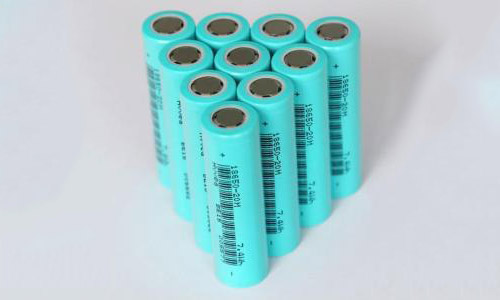Lipo Batteries For Model Aircraft Capacity And Charging
Mar 05, 2020 Pageview:1901
Lipo batteries have recently been commercially accessible, and their performance attributes have immediately taken them to the highest point of the Modelers list of things to get.
Nowadays, people think of using lithium-ion batteries over nickel-cadmium batteries because LIB technology offers high energy density. It additionally gives a low self-discharge rate, and it is intended to provide a major power source for the model, which is the reason these batteries are utilized in model aircraft.The energy density of these cells is a path over the other cell types you have utilized, and this, together with their capacity to convey significant levels of intensity.
Their impact on the electric fueled model flight has been a little amazing, and even though there is little information to help the insights, it appears that flying is utilizing electric force presently surpasses 50 %. Lipo cells and batteries are the latest batteries of all. Users are more comfortable with them than older types.
Do LiPo batteries lose capacity over time?
If you consider the limit of a lipo cell/battery, then you have to embrace a different system that utilized with previous cell types. While the capacity itself is estimated in ampere-hours (Ah) or milliampere hours (mAh) for littler packs, you likewise interface this to a C rating for the pack, which is a measure of the rate of discharge.
A 1C rate is proportionate to a total release in one hour, so the current drawn will be the Ah limit numerically expressed in Amps. Multiples of C (2C, 5C, 20C, and so forth.) would include a current draw expanded by the same multiple with the time frame diminished in a similar proportion.
A hypothetical model would be a 3500 mAh battery released at 2C when 7000 mA (7.0 Amps) drawn from the pack would keep going for 30 minutes, or the same battery recharged at 0.5C when the charging current would be 1750 mAh (1.75 Amps), and the pack would take 2 hours to recharge from empty battery fully.
One extra utilization of C ratings is as far as most extreme release rates. The maximum current, which can be securely drawn from a battery, is one method for estimating the nature of a pack so that identical limit packs can be rated differently.
A 2000 mAh pack appraised at 20C ought to be constrained to the highest release current of "20x2 = 40 Amps", though a 2000 mAh pack evaluated at 50C can hypothetically be stacked at "50x2 = 100 Amps". The C ratings built by the manufacturers and there is some interpretation of the assessment.
How long do LiPo batteries hold a charge?
Lipo batteries have fantastic charge maintenance. Whenever left for a period without use, there is almost no self-discharge over very significant stretches, mainly if the capacity is temperature stable (inside express 10? to 25?C).
This additionally applies to short term storage, as maybe may be where batteries are charged 1 or 2 days before the flying meeting. If the storage will be for a time of months (maybe over winter) at that point, the state of the packs is best constrained by setting the voltage to immediate value.
There may not be carefully the technical purpose behind this. However, a voltage of around 60% of the vacant/full range (say somewhere in the range of 3.6 and 3.8 volts) appears to be perfect. The remarks above on charging and discharging Lipos unmistakably shows that the issue zones for these batteries are at the restrictions of the voltage range, and it is consistent with accepting that capacity voltages are best set at the mean value of this range.
What is the best LiPo battery for model aircraft?
Lipo batteries are used to power radio-controlled aircraft. The advantages are lower weight, increased price, and power delivery. The Lipo batteries are available in various configurations up to 2000 mAh, 400 mAh 6000 mAh, 8000 mAh achieving a maximum of 4.2 V/cell. The batteries that are used in an unmanned aerial vehicle (UAV) :
2000 mAh batteries -
TP2000-2SPL –
oMax Charge: 3C
oMax Cont. Discharge: 16C
oMax Charge Current: 6A
oMax Burst Discharge: 30C
oMax Burst Current: 60A
oWeight (g) *estimate only*:?85 g
oMax Current is 32A
oDimensions (mm) 15 x 47 x 73
TP2000-5SPL –
oMax Charge is 3C
oMax Cont. Discharge is16C
oMax Charge Current is 6A
oMax Burst Discharge is 30C
oMax Burst Current is 60A
oWeight is?197 g
oMax Cont current is 32 Ampere
oDimensions (mm) 33 x 47 x 73
4000 mAh Batteries
TP4000-6S2PL
oMax Charge: 3C
oMax Cont. Discharge: 16C
oMax Charge Current: 12A
oMax Burst Discharge: 25C
oMax Burst Current: 100A
oWeight (g) is?496 g
oMax Cont. Current: 64A
oDimensions (mm) is 30 x 47 x 220
TP4000-5S2PL
oMax Charge: 3C
oMax Cont. Discharge: 16C
oMax Charge Current: 12A
oMax Burst Discharge: 25C
oMax Burst Current: 100A
oWeight (g) is?416 g
oMax Cont. Current is 64A
oDimensions (mm) is 15 x 47 x 365
6000 mAh batteries
TP6000-5S3PLV
oMax Charge: 3C
oMax Cont. Discharge: 16C
oMax Charge Current: 18A
oMax Burst Discharge: 25C
oMax Burst Current: 150A
oWeight (g) is 627 g
oMax Cont. Current: 96A
oDimensions (mm) : 21 x 76 x 230
TP6000-5S3PL
oMax Charge: 3C
oMax Cont. Discharge: 16C
oMax Charge Current: 18A
oMax Burst Discharge: 25C
oMax Burst Current: 150A
oWeight (g) is?627 g
oMax Cont. Current: 96A
8000 mAh batteries
TP6000-6S4PLV
oMax Charge is 3C
oMax Cont. Discharge is 16C
oMax Charge Current: 24A
oMax Burst Discharge: 25C
oMax Burst Current: 200A
oWeight (g) os 932 g
oMax Cont. Current: 128A
oDimensions (mm) 35 x 76 x 276
TP6000-6S4PLV
oMax Charge: 3C
oMax Cont. Discharge: 16C
oMax Charge Current: 24A
oMax Burst Discharge: 25C
oMax Burst Current: 200A
oWeight (g) is932 g
oMax Cont. Current: 128A
oDimensions (mm) TBD
Conclusion
LiPo batteries widely used in the model aircraft industry such as in UAV. The performance of different batteries is known in the above article which helps us to choose the best batteries for Unmanned Aerial vehicles.
Leave Message
Hottest Categories
-
Hottest Industry News
-
Latest Industry News












